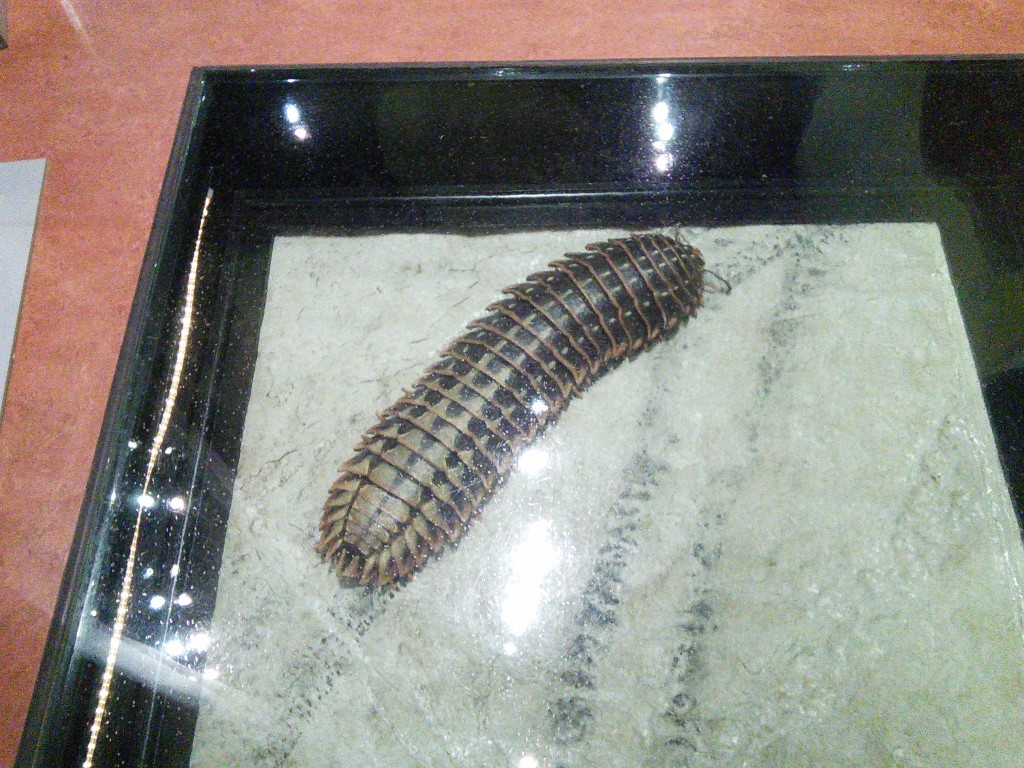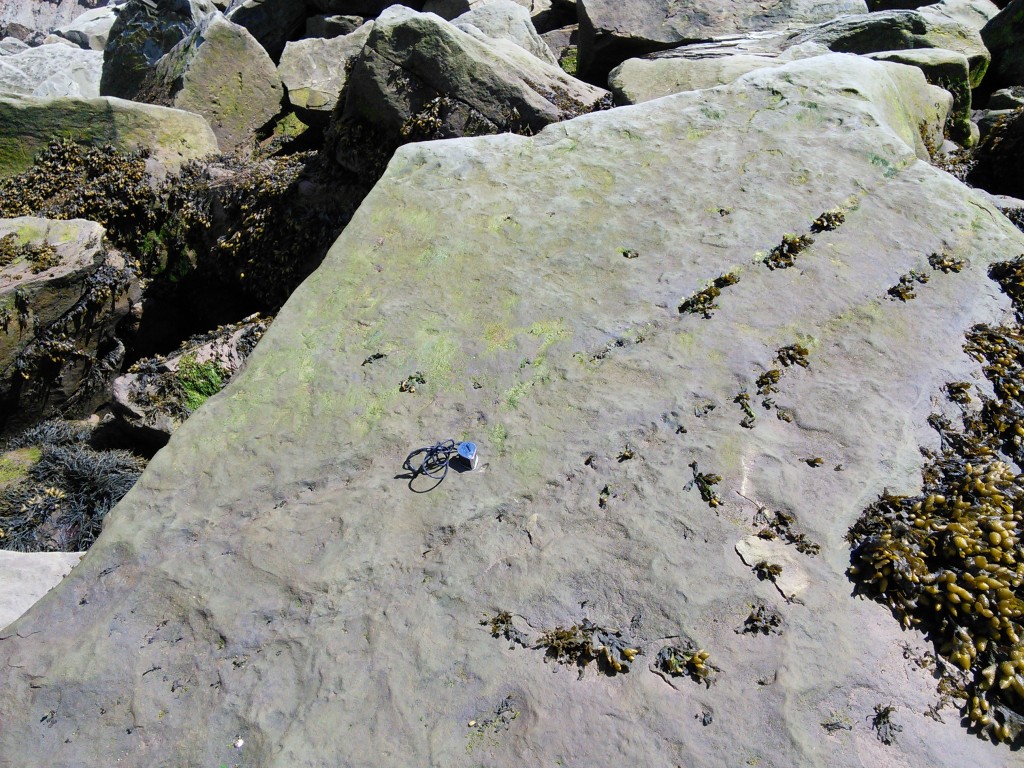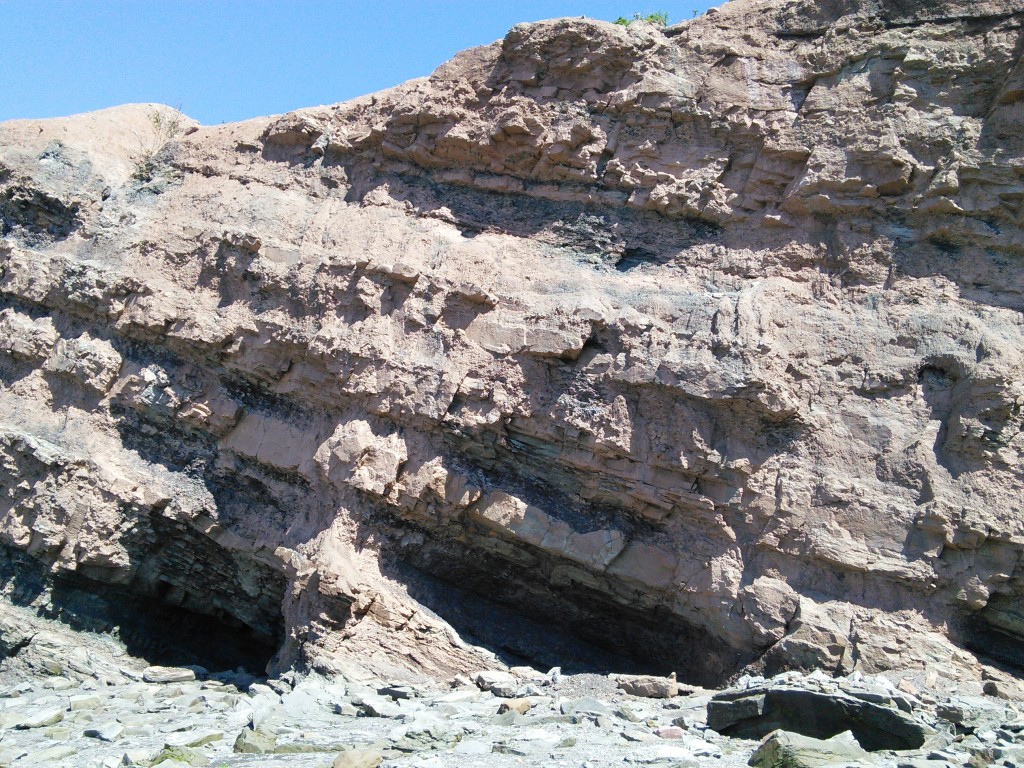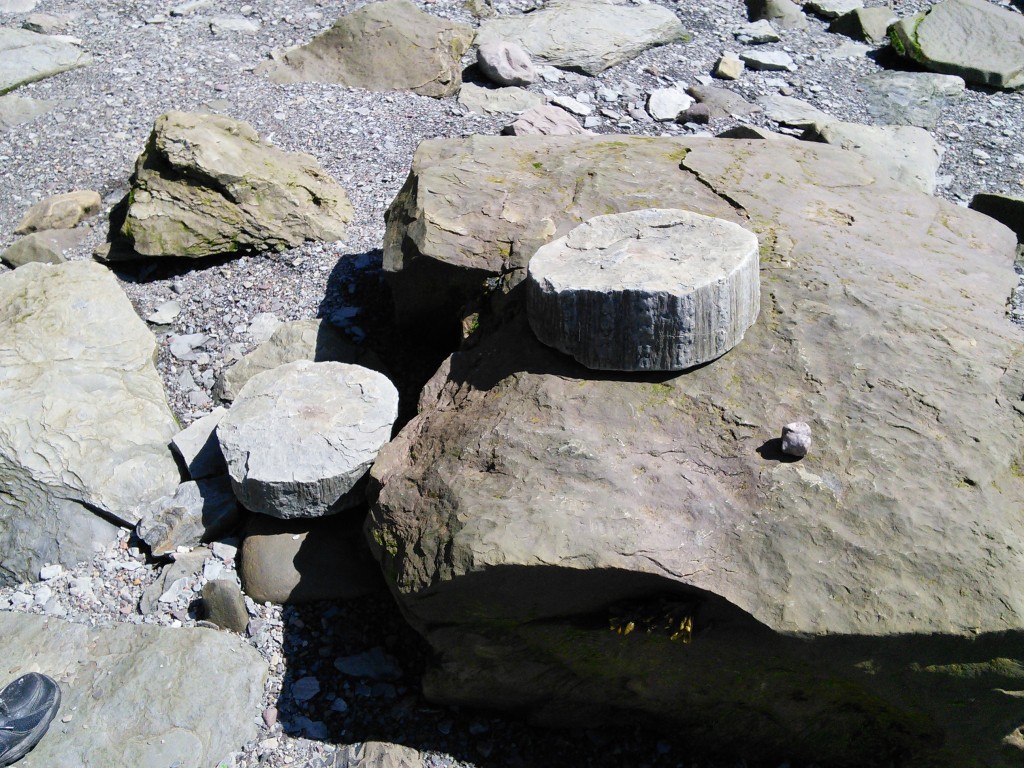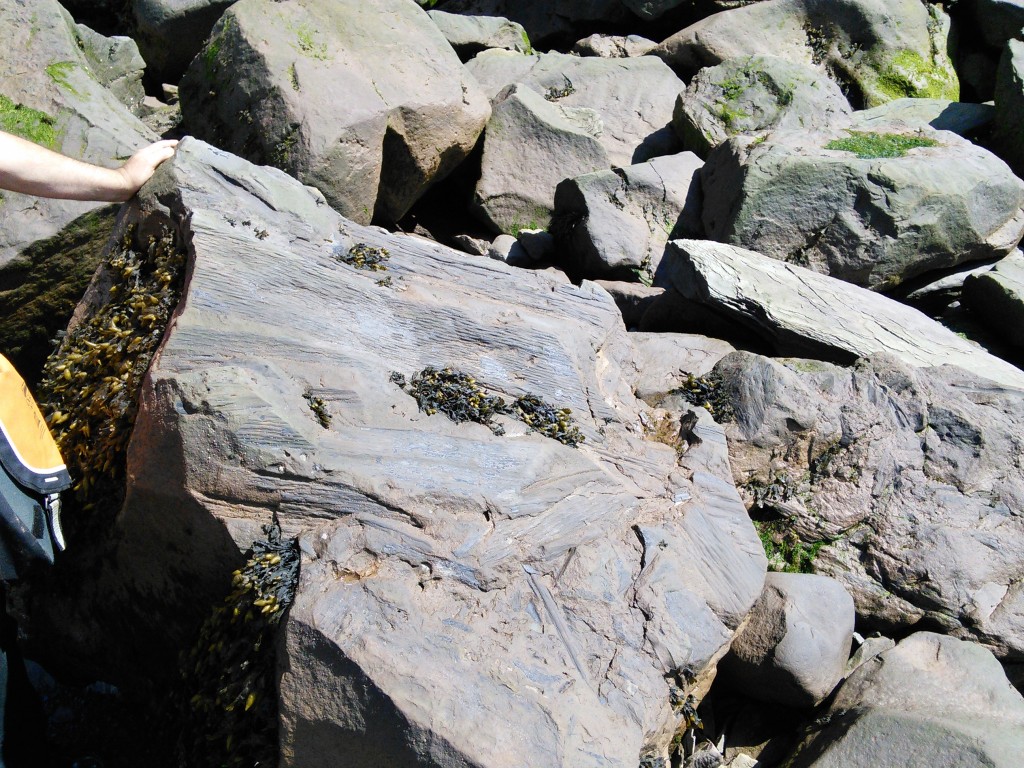Nova Scotia
The coastal cliffs at Joggins, on the shores of the Bay of Fundy in Nova Scotia, have long been famous for their dramatic exposure of Carboniferous strata, for their exceptional fossil record of terrestrial life, and for their historic role in pivotal theories of geology and evolution. Joggins is famous for its record of fossils from a rainforest ecosystem approximately 310 million years ago, dating to the Pennsylvanian “Coal Age” of earth history. The 915 m thick Joggins Formation has yielded historic discoveries of the earliest reptiles and tetrapod-bearing fossil lycopsid forests.
One peculiarity of the Carboniferous is the presence of unusually large land invertebrates – flying dragon fly like insects with wing spans of 30 inches, May flies with wing spans of 18 inches, and a millipede (Arthropleura) that reached over 8 feet in length!

